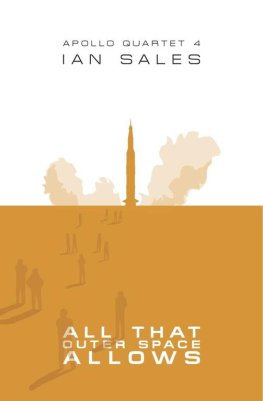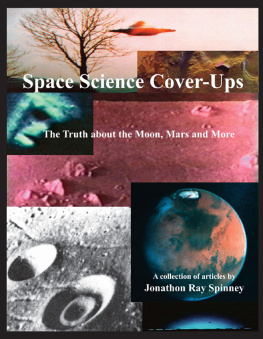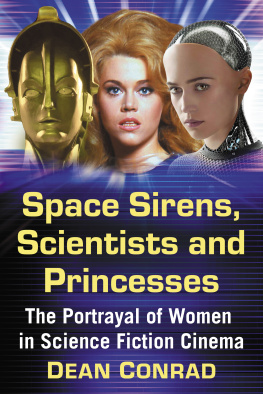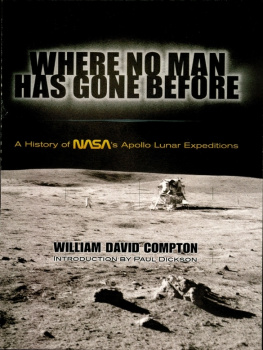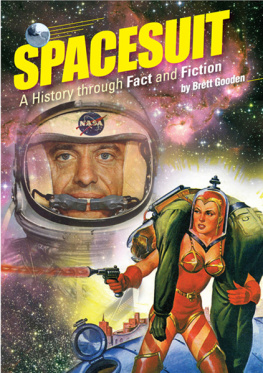Space Exploration on Film
Also by Paul Meehan and from McFarland
The Haunted House on Film: An Historical Analysis (2020)
Tech-Noir : The Fusion of Science Fiction and Film Noir (2008; paperback 2018)
The Ghost of Ones Self: Doppelgangers in Mystery, Horror and Science Fiction Films (2017)
The Vampire in Science Fiction Film and Literature (2014)
Horror Noir: Where Cinemas Dark Sisters Meet (2011)
Cinema of the Psychic Realm: A Critical Survey (2009)
Tech-Noir : The Fusion of Science Fiction and Film Noir (2008)
Space Exploration on Film
Paul Meehan

McFarland & Company, Inc., Publishers
Jefferson, North Carolina
ISBN (print) 978-1-4766-8133-7
ISBN (ebook) 978-1-4766-4437-0
Library of Congress and British Library cataloguing data are available
Library of Congress Control Number 2022015310
2022 Paul Meehan. All rights reserved
No part of this book may be reproduced or transmitted in any form or by any means, electronic or mechanical, including photocopying or recording, or by any information storage and retrieval system, without permission in writing from the publisher.
Front cover: Keir Dullea in 2001: A Space Odyssey , 1968, directed by Stanley Kubrick (MGM/Photofest MGM Photographer: Kevin Bray)
Printed in the United States of America
McFarland & Company, Inc., Publishers
Box 611, Jefferson, North Carolina 28640
www.mcfarlandpub.com
Table of Contents
Preface
It is not hyperbole to state that humanity stands on the threshold of a new space age. As of this writing in 2022, a revitalized American space program has enabled astronauts to routinely travel to the International Space Station; the Chinese Yutu-2 rover is exploring the far side of the Moon; and NASAs Osiris-Rex spacecraft has landed on the asteroid 101955 Bennu, located more than 200 million miles from Earth, and gathered samples for its return voyage. The SpaceX consortium is testing its super-heavy Starship reusable launch vehicle that is capable of carrying a 100-ton payload into orbit to transport crew and cargo to the Moon and Mars and into deep space. NASA is planning to return astronauts to the Moon using the newly minted Orion spacecraft in a mission dubbed Project Artemis, and the building of cities on Mars is even being proposed.
Long before humans flew in space, films depicting space flight beguiled audiences. The big screens first serious interplanetary voyage was launched more than 100 years ago, and over the years, as space flight became a reality, the cinema reflected the shifting paradigms of our understanding of the universe. Early flights of fancy gave way to more scientifically accurate depictions of space exploration that would provide inspiration for those who dreamed of voyages beyond the Earth. The German rocket scientists who built the massive vehicles that launched the Apollo missions cited the silent science fiction classic Woman in the Moon as inspiration, while Americans currently working on the U.S. space program were inspired by films such as 2001: A Space Odyssey and The Right Stuff .
In the 21st century, advances in visual effects technology have enabled filmmakers to render vistas of outer space with a new level of verisimilitude. Films such as Gravity (2013), I nterstellar (2014), The Martian (2015), First Man (2018) and Ad Astra (2019) brought the outer space environment onto the silver screen in 3-D and/or IMAX. These films present (more or less) realistic depictions of space travel that embrace hard science instead of the more fantastic notions of flights to other worlds that appear in popular science fiction franchises such as the Alien, Star Wars and Guardians of the Galaxy action-adventure movies.
The general public possesses a rudimentary knowledge of the scientific concepts involved in astronomy, rocket science and celestial mechanics. Looking up into the night sky, the casual observer regards the Moon, the planets and the stars without a clear realization of the relative distances of these celestial objects from the Earth; that the Moon is close by, the planets much farther away and the stars are so distant that traveling there may be impossible. Hollywood filmmakers tend to ignore these astronomical relationships while depicting nearly instantaneous transits of spaceships over vast distances.
This book, on the other hand, categorizes and analyzes movies about space flight that emphasize science over science fiction. These include, most prominently, fact-based re-enactments of actual American and Russian space missions such as Apollo 13, First Man, Gagarin: First in Space , The Spacewalker and Salyut 7 . It also includes historical accounts of the development of space technology in I Aim at the Stars, The Right Stuff, October Sky and Hidden Figures , as well as speculative dramatizations made during the formative years of the space age: Destination Moon, Conquest of Space , Road to the Stars, Countdown and Marooned .
Of course, theres plenty of room for speculative science fiction about the future of space exploration involving voyages to Mars in films like Robinson Crusoe on Mars, Red Planet and The Martian , trips to the outer planets of the solar system in 2010, Europa Report and Ad Astra , and even journeys to the stars in Ikarie XB-1 , The Andromeda Nebula, Contact and Interstellar . While current technology has not yet reached a level of complexity that would enable such voyages, these films may point the way to humankinds future in space, as all of them are grounded in some level of scientific factuality.
In Homers Odyssey , composed in ancient Greek times, the eponymous hero undertakes a perilous journey over uncharted waters, where he undergoes many trials and visits unknown lands. The almost incomprehensible vastness of outer space, however, makes Homers wine-dark seas seem like a mere puddle. Yet, as in the Odyssey , these similarly uncharted realms are fraught with myriad dangers. Here be monsters and perils uncountable: extraterrestrials, meteors, strange energies, deadly microbes and the unforgiving environment of the cold, airless void itself that imperils humans and machines alike. These space odysseys have been undertaken by some of the cinemas most acclaimed filmmakers, a list that includes Fritz Lang, George Pal, Andrei Tarkovsky, Stanley Kubrick, Robert Wise, Ron Howard, Philip Kaufman, Robert Zemeckis, Ridley Scott and Christopher Nolan. As humankind forges ahead to explore these mysterious realms, we may gain inspiration from the cinema visionaries who went there first and showed us the way.
Introduction : Space Travel in Science Fiction and Science Fact
Since time immemorial, humankind has lifted its eyes to the heavens and wondered what mysteries are within the orbits of the Moon, the planets and the stars. Myths, legends and literature imbued these realms with fantasy and magic. It seemed likely that our sister worlds were inhabited by beings like ourselves, existing in exotic landscapes that we would like to visit. In the second century, the Syrian writer Lucian of Samosata penned a story about people who ascend to the Moon by means of a waterspout. The story Orlando Furioso , written in 1516, featured a trip to the Moon in a flaming chariot, while in Englishman Francis Godwins 1638 work The Man in the Moone, an explorer is pulled there by magical birds. The 17th-century French writer Cyrano de Bergerac devised a number of fanciful methods of ascending to the lunar surface in his 1649 book T he Voyage to the Moon , in which the protagonist finally reaches his objective in a craft powered by firecrackers.



